It all started with a notice in the mail.
Early in April, residents of Oakmore, a quiet neighborhood of single-family homes in Oakland, California, received an ordinary-looking envelope from a company called OnAir. Inside was a flyer inviting them to an open house where Verizon would tell them how it expects to install 16 new wireless antennas in the area.


Now playing:
Watch this:
Explaining 5G with a game of pool
4:21
The carrier’s promises were enthusiastic: “Verizon Wireless is improving wireless service in Oakland!” the notice read.
Alexis Schroeder, who’s lived in Oakmore for 21 years, was immediately curious. She made plans to attend the meeting, set for a few weeks later. Then, disappointed by the lack of straight answers at the event, she left vowing to change Verizon’s plans. As a Verizon customer, she admits she could benefit from new antennas. But as she sees it, Verizon, backed by the FCC, is bullying its way through the process.
“I don’t like that this corporate giant thinks it can take advantage of these neighbors,” Schroeder says. “They did a poor job representing their company.”
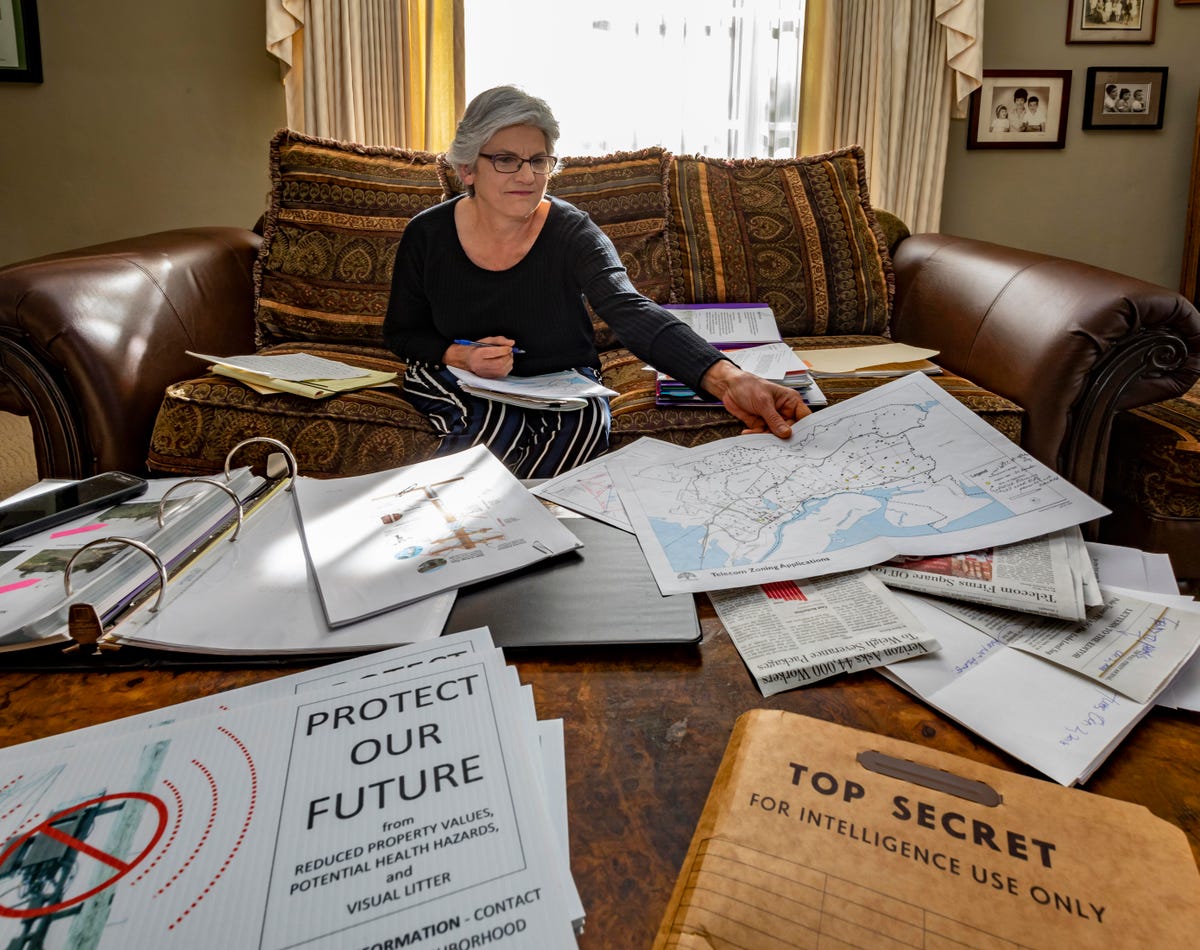

Oakmore resident Alexis Schroeder is leading the neighborhood effort against Verizon’s proposed small-cell antennas.
James Martin/CNET
Oakland isn’t the only city that’ll feel the impact as wireless carriers like Verizon spend billions to aggressively expand their networks and prepare for speedy 5G services. Rather than relying on the huge cellular towers that already loom over industrial parks and shopping centers, carriers are counting on “small cell” antennas placed only hundreds of feet apart. About the size of a backpack, a small cell is typically installed atop an existing utility pole or streetlight, sometimes with other equipment closer to the ground. The small antennas are less powerful than cell towers, covering an area of up to 1,000 feet rather than a few miles. So carriers need more of them to blanket a neighborhood.
Many people, eager for better wireless reception on everything from phones to home security systems, aren’t complaining. And as more people ditch landlines, cities increasingly depend on reliable mobile networks to provide basic services, including emergency response. But for homeowners like Schroeder, the idea of antennas sprouting like weeds outside the front door is sparking controversy about property values, neighborhood clutter and the safety of wireless signals. She and others around the country are fighting city hall, leaving local officials to address their concerns while fending off a federal government eager to press ahead with 5G no matter what residents say.
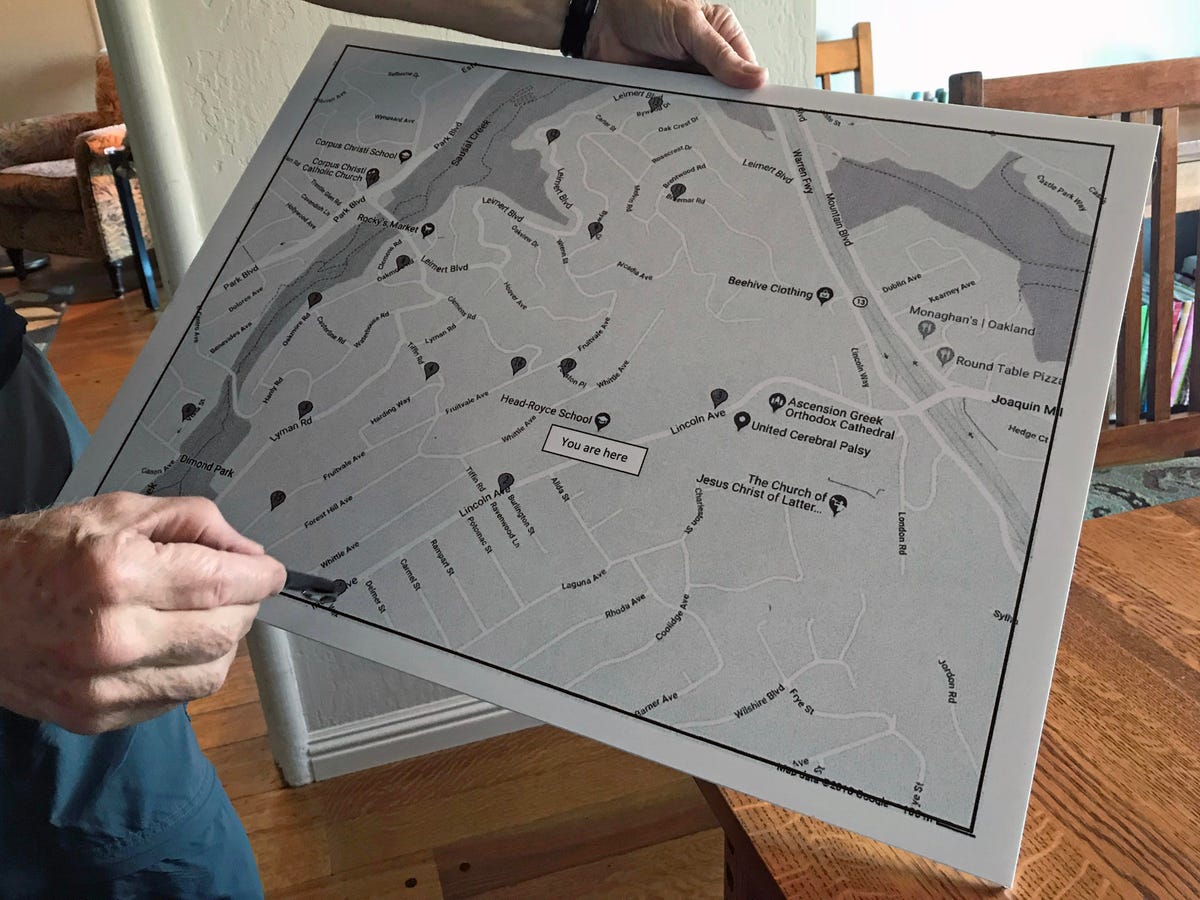

Dennis Cathey, an Oakmore resident opposing Verizon’s plans in the neighborhood, holds a sign showing where the 16 antennas would be located.
Kent German/CNET
Rattling Verizon’s cage
In many ways, the geography of Oakmore makes it an ideal area for small cells. Sprawling across a few square miles between the wealthy enclave of Piedmont and Oakland’s rocket ship-like Mormon Temple, it’s composed of rolling hills that rise from San Francisco Bay. On the neighborhood’s western side, the hills drop abruptly into a canyon with redwoods and oak trees, all things that can disrupt wireless signals.
Of the 16 small cells it’s proposed for the area, Verizon has filed applications for five with the Oakland Planning Commission (it withdrew a sixth application in September). Schroeder realizes the odds are long when it comes to completely stopping the installations, but the challenge doesn’t faze her. A self-employed bookkeeper, she raised two children in Oakmore with her husband. There’s little about her that doesn’t seem finely organized, from her spotless and comfortable living room to the binders she’s carefully filled with meeting notes, letters she’s written and city documents.
More CNET coverage on 5G
- 5G is almost a reality. Here’s what it’ll really feel like
- The 5G revolution is coming. Here’s everything you need to know
- How 5G pits the FCC, carriers against local governments
Though Schroeder describes herself as a cage-rattler, she says she’s never been this involved with local issues before, and she almost threw the open-house notice away without reading it. But plenty about it bothered her, starting with the fact that it came from OnAir, a company she’d never heard of. Wireless carriers regularly contract with other companies like OnAir to build their infrastructure. (The notice inside the envelope listed both Verizon and OnAir.)
“That was my trigger, I thought Verizon was doing something sneaky,” she says. “I think I’m reasonable and fair. If it had said Verizon on the envelope, if [Verizon] had been honest and upfront, I don’t think I’d be sitting here talking to you.”
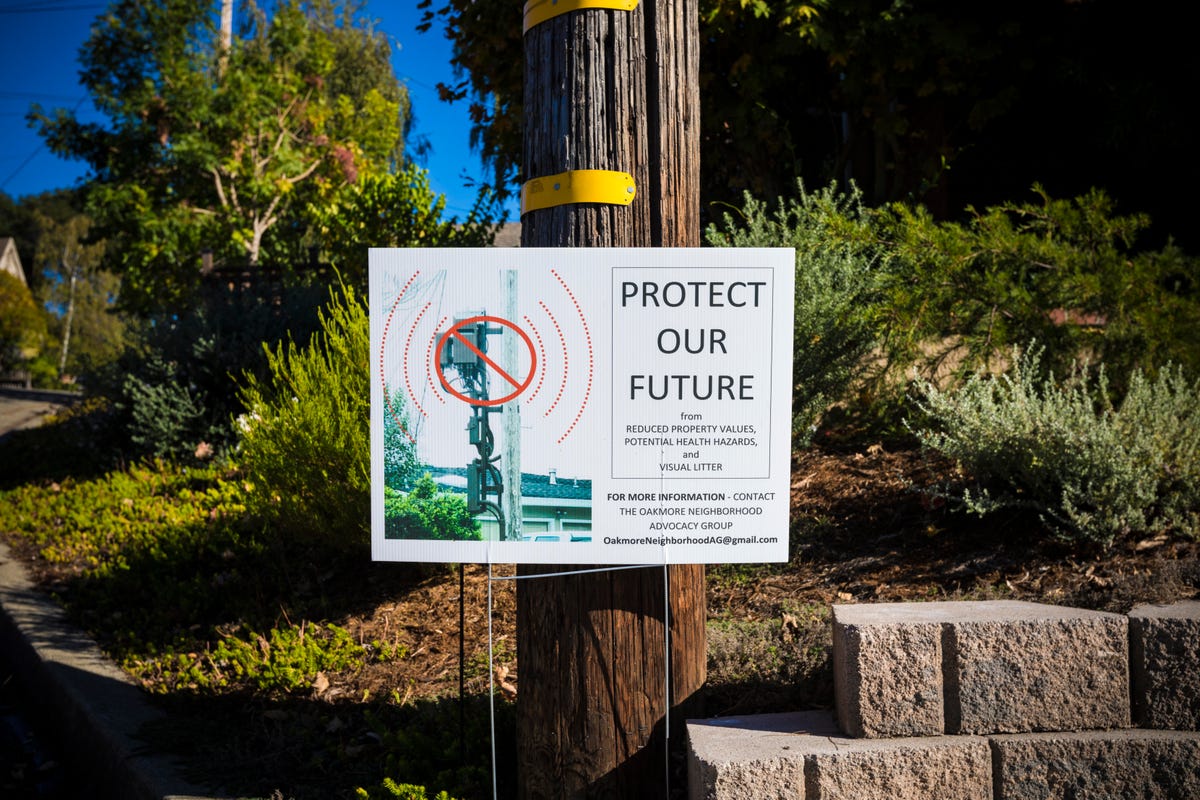

Yard signs protesting the antennas, like this one outside Schroeder’s home, dot the Oakmore neighborhood.
James Martin/CNET
The format of the initial open house was another red flag. Instead of hearing a formal presentation about the antennas, she says, attendees were invited by OnAir reps to ask questions. One rep did talk about the benefits of 5G, which should begin to arrive around the country in 2019. But to Schroeder, none of the information presented was helpful or accessible. A map showing the strength of Verizon’s coverage in the area also made no sense.
“I just didn’t like it, that’s the wrong way to do community outreach,” she says. “I didn’t know what to ask, and they didn’t tell me anything, but they expected me to ask questions.”
Verizon spokeswoman Heidi Flato says the carrier is committed to engaging with Oakmore residents. “While the City of Oakland doesn’t have a community meeting requirement for small-cell permitting, we believe it’s important to inform residents about our small-cell plan and hear their concerns,” she says. “We sent notices two weeks in advance of our meeting and had subject matter experts on hand to answer questions.”
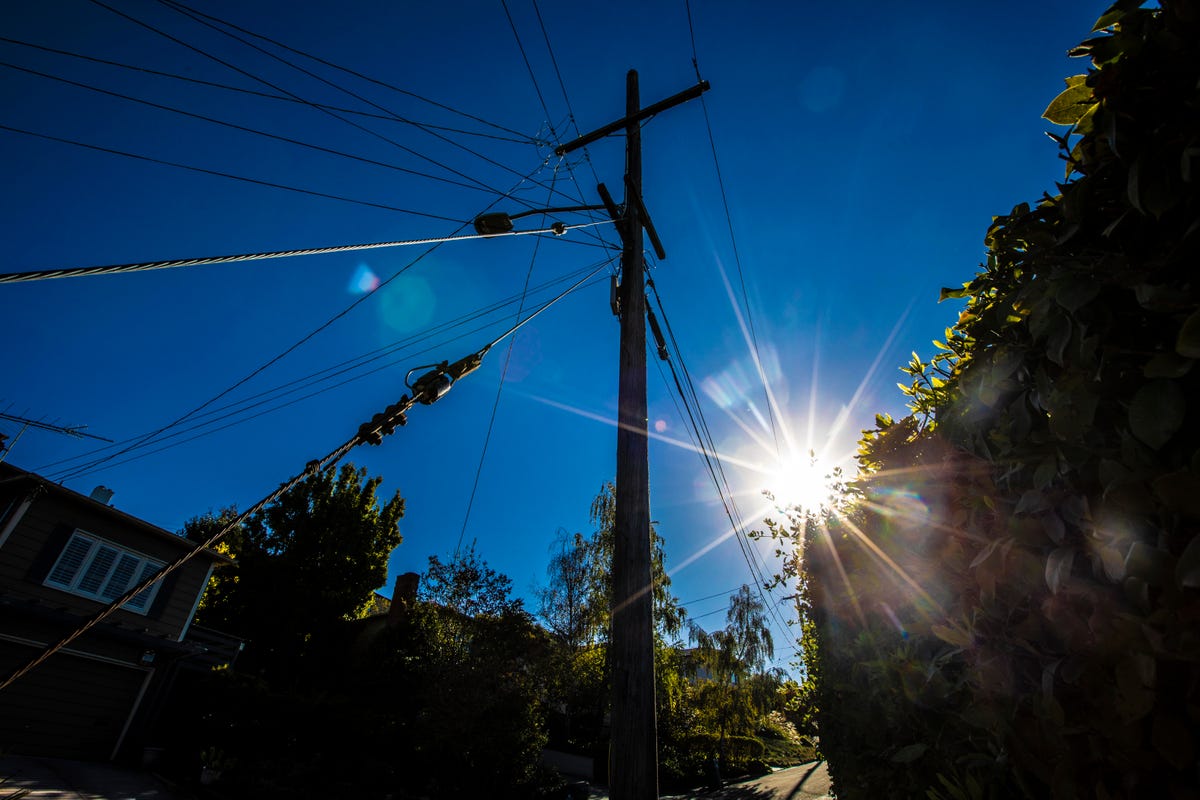

Verizon has proposed an antenna for this utility pole across the street from Schroeder’s home.
James Martin/CNET
Getting organized
Shortly after the open house, Schroeder and a few other neighbors formed the Oakmore Neighborhood Advocacy Group to take on the issue. Though the group doesn’t have a set membership, she meets weekly in her home with an executive committee of eight people to plan strategy.
One of ONAG’s first steps was to organize a second open house. Verizon representatives detailed the carrier’s plans, Oakland city officials explained the antenna approval process and residents asked questions during an open forum. As the meeting ended, a long line of neighbors argued, sometimes passionately, against the antennas for more than an hour.
They pressed the panelists on a wide range of subjects, from whether wooden utility poles could withstand the 200-pound weight of a small cell — not an insignificant concern in California, where downed power lines have caused devastating wildfires — to whether wireless signals could disturb migratory birds. (The Verizon reps who attended the meeting declined to be interviewed for this story.)
ONAG member Dennis Cathey says the meeting helped inspire more neighbors to get behind the group.
“By the end of the meeting, [the Verizon reps] were squirming in their seats and having problems answering questions,” he says. “I thought it was very useful for our cause. It put Verizon on notice that we want to know more about what you plan to do.”
Verizon’s Flato says the company was happy to attend. But in late July, just as ONAG started petitioning city officials about the small-cell applications, Verizon sent a text message to customers in Oakmore promoting its plans.
“Reply YES to this text to show your support for improved Verizon Wireless service in the Oakmore neighborhood,” the text said. “Add a message to tell the city you support small cells on wood utility poles.” (Though they could do so, recipients weren’t directly invited to reply no.) A week later as part of its application package to the city, the carrier sent a letter to city officials saying 111 people had responded yes, with 16 people opposed.
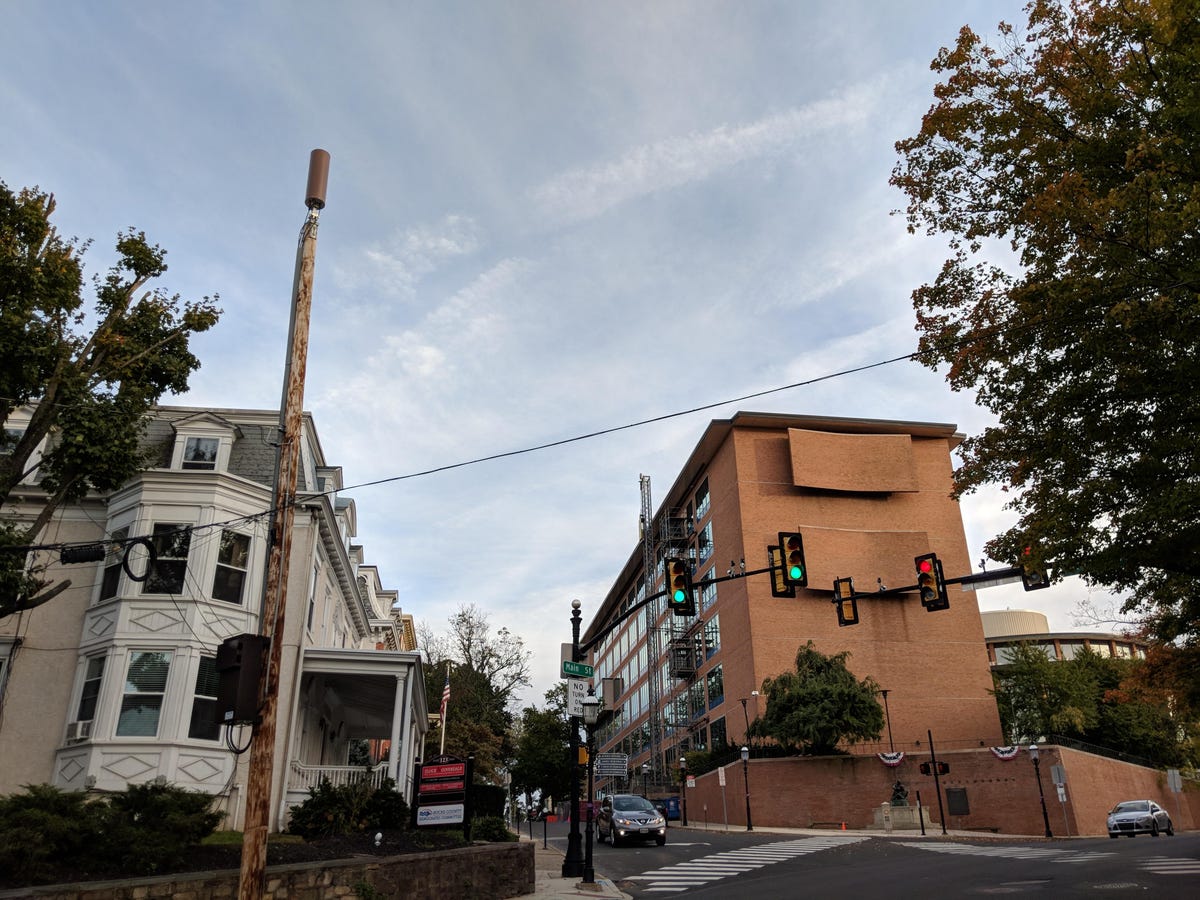

A cylinder-shaped small cell radio that will deliver 5G service sits atop its own utility pole in Doylestown, Pennsylvania.
Marguerite Reardon/CNET
Schroeder says that she never received the message and that 111 people is hardly a representative sample of the neighborhood, which has a population of about 4,000. What’s more, a Verizon-only text isn’t fair to residents who aren’t the carrier’s customers. They won’t benefit from the antennas, but they still have to live with them.
When Schroeder sent a complaint letter to the FCC, Verizon called the complaint “unfounded” and said she’d chosen to opt out of marketing texts via a setting on her phone, a claim she disputes.
“It’s like they think they can be sloppy and do a substandard job and there’s nothing we can do about it, she says. “We’re here to say, ‘Yes, we can do something about it.'”


Now playing:
Watch this:
What the heck is a 5G network?
1:29
Flato says it’s common for Verizon to send such texts when seeking approvals for new wireless facilities.
“Residents who oppose new wireless infrastructure projects tend to be quite vocal and typically participate in hearings and community meetings,” she said in an email. “On the other hand, customers who are in favor of improved service and infrastructure deployment tend not to voice their opinions unless they are asked. We find it’s helpful to survey our customers so we can demonstrate community support when going through the permitting process with local jurisdictions.”
Not all neighbors
Attend one of ONAG’s weekly meetings and it’s clear the group is getting attention. At an August gathering, more than 25 people showed up to express their opposition to the antennas. Two candidates for the Oakland City Council district that covers Oakmore have addressed the group, but none has so far taken a public stance for or against the small cells.
Not everyone in the area is rallying to the cause, though. For instance, Dr. Myles Lampenfeld, Cathey’s across-the-street neighbor and a recently retired radiation oncologist, isn’t openly advocating for the antennas, but he doesn’t see a disadvantage to them. He feels, he says, like a tiny voice in the wilderness.
A Verizon customer, Lampenfeld’s first thought when he heard about the antennas was that they’d improve his occasionally spotty service. He doesn’t know a lot about 5G, but he’s eager to use it once it arrives.
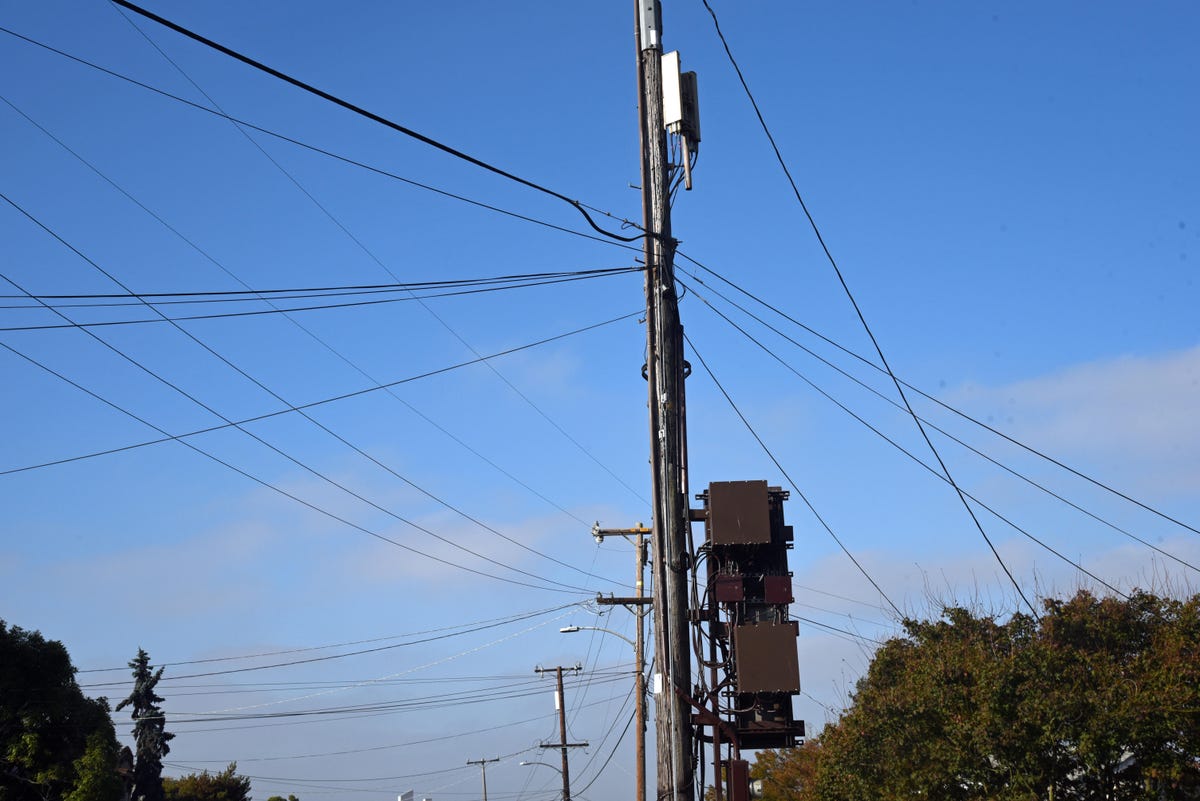

Cellular antenna equipment crowds a utility pole located in another part of Oakland.
Kent German/CNET
“I understand that it’s about better reception and more functions,” he says. “If everything is stepping up to 5G, it’s important for users to be stepping up.”
Lampenfeld is skeptical of the arguments used to oppose the antennas. He’s says the neighborhood’s beauty is already marred by electrical wires strung between the utility poles and that new antennas won’t make things worse.
He’s also not convinced that exposure to wireless signals could be unhealthy. “It’s no more dangerous than anything we do in the course of our daily lives … crossing the street, using our microwave oven, breathing exhaust fumes from vehicles driving by,” he says. “It’s not been proven to cause cancer. It might, but you can say might about a lot of things.” (See CNET’s related story on wireless emissions and health.)
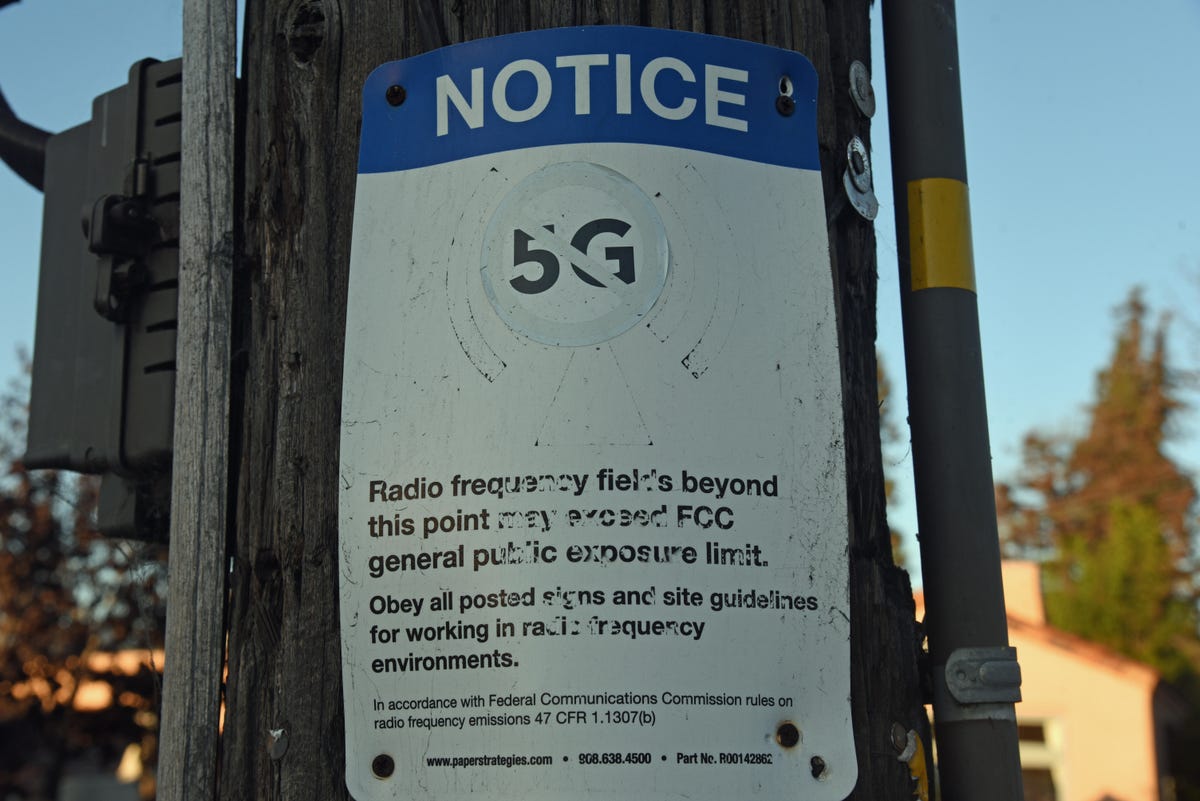

An FCC warning on the pole shows a “No on 5G” protest sticker.
Kent German/CNET
Fighting for all of Oakland
Schroeder says she’s not against better cell service but there’s a cost to the 5G leap. If Verizon can design sleek antennas and ensure her that the technology is safe, she’ll be happy. Cities can evaluate an antenna’s design when approving an application, but they’re barred from considering the safety of wireless signals under the 1996 Telecommunications Act.
‘I know I can’t fight things about the health issues, because the FCC has handcuffed us,” she says. “I’m not affected by property values because I’m not moving. … My bigger issue personally is I don’t it want to be David vs. Goliath.”
Cathey agrees. “Verizon doesn’t have to make [the antennas] look ugly,” he says. “And I don’t think Verizon or the FCC is looking out for me. They haven’t done the research to show that if one of these things is outside my house, it’s safe.”
Verizon Open House Invitation by jonathan_skillings on Scribd
Verizon says all its antenna equipment complies with FCC standards for wireless signal emissions, and the company disputes the idea that small cells in a neighborhood lower property values. In an information brochure it distributed to some Oakmore residents — carriers are required to notify all residents living within 300 feet of a proposed antenna location — it cited a RootMetrics study that said reliable mobile service was more important than schools to potential home buyers.
As a company that tests wireless signals for carriers, RootMetrics has an interest in promoting better wireless coverage. Other studies, like one from the National Institute for Science, Law & Public Policy, have suggested that buyers will pay less for a home near an antenna. (The median price of an Oakmore home is just under $1 million, according to data from Zillow.)
But David Stark, the public affairs director of the Bay East Association of Realtors, is dubious.
“I’ve never heard of an impact of a cell tower on a property’s value,” he says. “It could become more of an issue in the future, but there are much bigger factors to consider, especially in an area [like Oakland] where multiple offers on a house are common.”
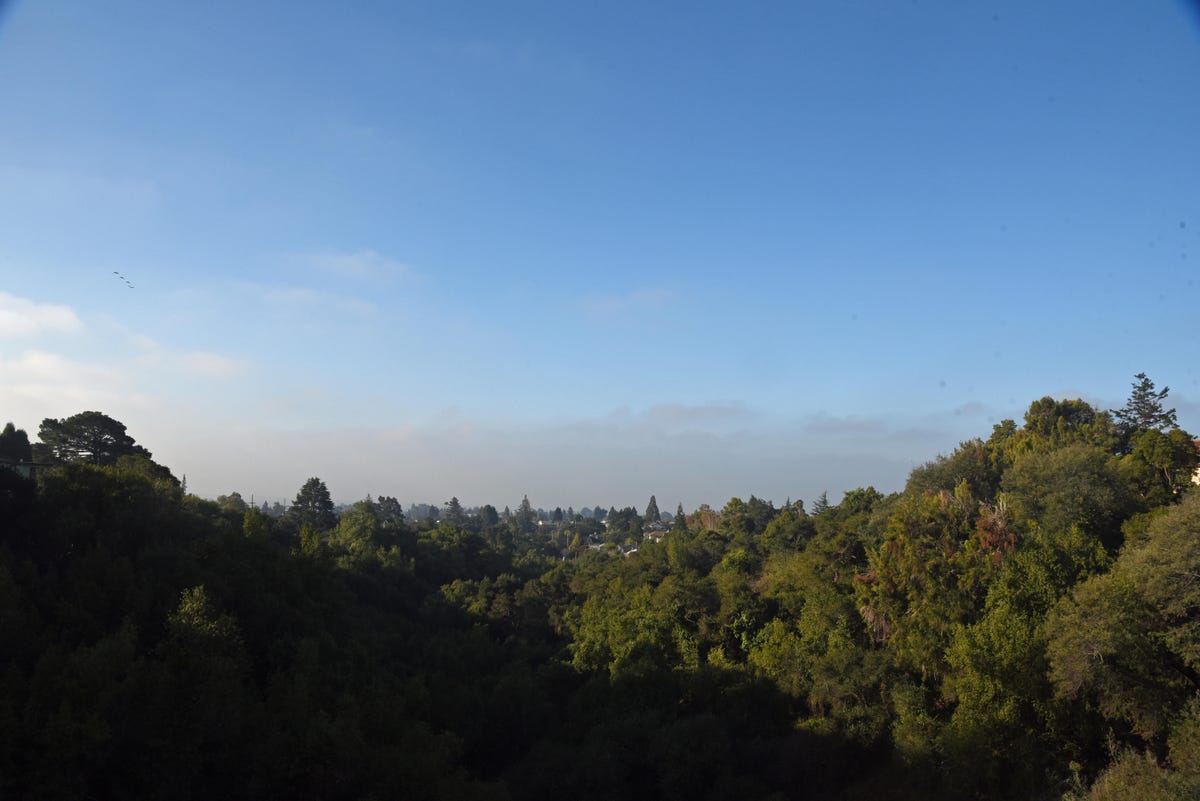

Oakmore’s hilly geography can make for spotty wireless service. Verizon says its new antennas will improve reception.
Kent German/CNET
If carriers get their way with small cells, it may one day be hard to find a home that’s not near an antenna. For now, though, ONAG is pressing ahead with its fight. The neighborhood is dotted with yard signs the group distributed that protest the antennas, and members continue to lobby city officials. Until the city’s planning commission holds a hearing on the Oakmore antennas, ONAG is taking its fight to other Oakland neighborhoods.
Schroeder says the goal is to avoid any charge of NIMBYism or “not in my backyard.” She’d love it if Verizon bypasses Oakmore, but not if it means Verizon just adds the antennas in another area nearby.
“For anything we do, we don’t want to represent it as us versus another part of Oakland. We have to represent all of Oakland,” she says. “Each pole counts, so we’ll fight every pole.”
So far, ONAG has had a few successes. At a planning commission meeting in late September, commissioners referred an antenna approval in another part of Oakland to the full city council after ONAG members spoke during the public forum.
For Schroeder, that’s enough to keep her motivated, even if the proposed antenna near her home eventually goes in. And when AT&T or T-Mobile come knocking with their own antenna plans, she knows she’ll have to start the process again.
“We’re optimistic that even if a pole goes in, it’s not without us putting up a hell of a fight,” she says. “I don’t want Verizon to think they won easily.”
Your next big upgrade: Everything you need to know about 5G technology.
CNET Magazine: Check out a sample of the stories in CNET’s newsstand edition.



